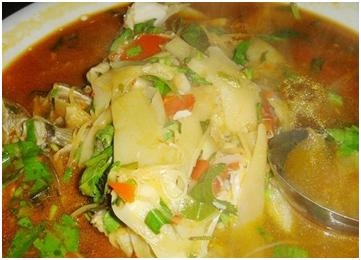代做 EBU5376、MATLAB 語言程序代寫
時間:2024-05-26 來源: 作者: 我要糾錯
EBU5376 Digital Signal Processing
LAB 1
Before you start, please read the following information carefully:
General Instructions:
• The .zip file you downloaded from QMPlus should contain the following documents:
o This lab sheet (needs to be completed)
o ‘Q2 data.mat’ is the dataset you will use for Question 2
• Type your answers in the textboxes provided. Figures need to be copied into the textboxes. If you need more space, enlarge the textbox or add a new box.
• Answers outside the textboxes will NOT be marked.
• If you require any technical assistance, please attend the lab session and ask the on-site TA for help.
How to submit:
• Submit one .zip file to QMPlus. The .zip file should contain:
1. This LAB SHEET converted to a PDF document
2. The MATLAB script containing all the work you did
Additional grading criteria:
• Your answers in this sheet must include sufficient explanations/derivations. Marks will be deducted if no explanation is given to support the answer.
• Your MATLAB script will be checked from the following three aspects:
o Whether it can REPRODUCE ALL THE FIGURES in this sheet
o Whether you have added appropriate COMMENTS to explain the codes
o Plagiarism
• If the MATLAB script is not submitted, your grade will be capped to 60%.
• Email submission NOT accepted.
• Do NOT plagiarize. Both the MATLAB script and this sheet will be checked for plagiarism.
Introduction
In this lab, you will investigate the characteristics of single pole filters and design filters for achieving the required effect. Single pole filters, also known as first-order filters, are basic yet effective tools for shaping the frequency response of a system, characterized by a single pole in their transfer function. They are commonly used in various applications due to their simplicity of implementation.
There are two commonly used equations for single pole filters, shown as below
Equation 1:
Equation 2:
Here, are coefficients in the general transfer function formula: . You may assume that and all other coefficients are zeros. is a positive continuous variable.
Question 1 –Basic Filter Response Analysis[30 marks]
In this question, you will be asked to investigate the time and frequency response characteristics of the single pole filters. Based on Equation 1 and 2, complete the following tasks.
Task 1: For each type of single pole filters shown in Equation 1 and 2, is it a Finite Impulse Response (FIR) filter or Infinite Impulse Response (IIR) filter?
[2 marks]
[Type your answers here]
Task 2: Based on Equation 1 and 2, write down the difference equations of the single pole filters when .
[4 marks]
[Type your answers here]
Task 3: Based on Equation 1, plot the impulse response and step response of the single pole filter when .
[4 marks]
[Paste the figures here]
Task 4: Based on Equation 2, plot the impulse response and step response of the single pole filter when .
[4 marks]
[Paste the figures here]
Task 5: Based on Equation 1, calculate the frequency response of the single pole filter when . Write down the first 4 values in the frequency response.
Then, plot the amplitude response and the phase response of this filter. The vertical axis in the amplitude response figure should be in dB.
[4 marks]
[Type your answers here]
[Paste the figures here]
Task 6: Based on Equation 2, plot the amplitude response and the phase response of this filter when . The vertical axis in the amplitude response figure should be in dB.
[2 marks]
[Paste the figures here]
Task 7: Based on all figures generated in the previous tasks, compare and evaluate the two types of single pole filters constructed using Equation 1 and 2.
[10 marks]
[Type your answers here]
Question 2 – Design Filters for Signal Separation[30 marks]
In this question, you will be asked to perform signal separation using single pole filters. Based on ‘Q2 data.mat’ complete the following tasks.
Task 1: Load ‘Q2 data.mat’. which contains the sampled signal . The sampling frequency was 400Hz. Plot the signal, where the horizontal axis is measured in seconds.
[2 marks]
[Paste the figures here]
Task 2: Construct two single pole filters using Equation 1 and 2 with . Apply the filters to separately. Plot the filtered .
[4 marks]
[Paste the figures here]
Task 3: Based on the figures in Task 1 and Task 2, describe the original signal and evaluate the signal separation result. Also, briefly describe how to improve the signal separation result.
[5 marks]
[Type your answers here]
Task 4: Construct filters using Equation 2 for various values of . Investigate the change in the amplitude response as the value of varies. Show 3 plots and describe the how the value of impacts the amplitude response of the filter
[6 marks]
[Paste the figures here]
[Type your answers here]
Task 5: Design two filters using Equation 1 and 2, where the values of are selected to optimize the signal separation results on . State and briefly explain the value of that you chose when constructing the two filters. Then, apply the filters to and plot the results. [6marks]
[Type your answers here]
[Paste the figures here]
Task 6: Based on the equation of the filters and the results from previous tasks, summarize how the single pole filters should be designed for separating high frequencies and low frequencies from a composite signal. You discussion should focus on the general case, not limited to the Q2 data.
[7 marks]
[Type your answers here]
請加QQ:99515681 郵箱:99515681@qq.com WX:codinghelp
標簽:
掃一掃在手機打開當前頁
注:本網條致力提供真實有用信息,所轉載的內容,其版權均由原作者和資料提供方所擁有!若有任何不適煩請聯系我們,將會在24小時內刪除。
無相關信息 昆明生活資訊















